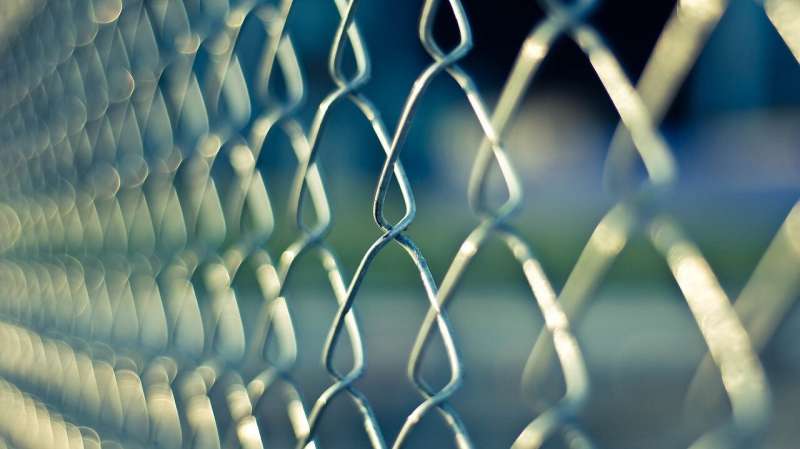Study shows more centralized, uniform COVID-19 response needed in prisons and jails

A more centralized, uniform response to combating the COVID-19 pandemic in American prisons and jails is required to curb the spread across an especially vulnerable incarcerated population, according to new Rutgers University–Camden research.
"The American criminal justice system is really a misnomer; it is not a single system, but comprised of thousands of federal, state, and local systems—and some are doing a much better job than others in slowing the spread of the coronavirus," says coauthor Dan Semenza, an assistant professor of criminal justice at Rutgers–Camden.
Semenza and Meghan Novisky, a researcher from Cleveland State University, and Chelsey Narvey, a researcher from Sam Houston State University, utilize a comparative approach—culling data from the websites of all 50 state Departments of Correction, as well as the Federal Bureau of Prisons—to explore the strengths and weaknesses of institutional responses to the COVID-19 pandemic in American prisons and jails.
Their paper, published in the peer-reviewed journal Victims and Offenders, also calls for grant funders and fellow researchers to prioritize incarceration-based data collection for short- and long-term assessments.
From the earliest days of the pandemic, says Semenza, research showed that, when adjusted for age and sex distribution, the death rate in prisons was about 39 deaths per 100,000—or about three times the national average. These alarming statistics were no surprise, he says, given that prison populations have poorer health on average and are much more vulnerable to infectious diseases due to the close living conditions. However, based on the federal government's "very fragmented COVID-19 response," they wanted to get a greater sense of how the pandemic was being handled on a state-to-state basis.
"We knew that it wasn't going to be uniform and that some states were probably doing way more than others," he says. "That's what drove the initial push to do this study."
Using a cutoff date of June 16, 2020, the researchers designed the database to track factors such as correctional population size; first confirmed COVID-19 case; total tests, cases, hospitalizations, recoveries, and deaths reported among staff; visitation policy changes; provision of PPE; and mitigation efforts.
The researchers found that, in light of no clear-cut federal guidelines, most state prison systems responded early in the pandemic by closing visitations and allowing for incarcerated persons to have remote contact with loved ones via phone, email, and/or video.
"We know that social isolation has such a high risk for people because of the shutdowns," says Semenza, "but for the most part, a lot of prisons responded by tweaking those visitation rights but still made sure that incarcerated persons had the ability to stay in touch with their loved ones."
However, the COVID-19 response varied widely in terms of data access and transparency, provision of PPE, and other mitigation efforts.
In terms of data access, says Semenza, most state sites did include COVID-related information. However, they varied greatly on comprehensiveness and transparency of testing data. One of the biggest weaknesses was the lack of quality data on staff testing.
"This information wasn't and still isn't good," says Semenza. "If we wanted to understand how many tests are being run, what the positivity rates are, and what the hospitalization rates are for staff, we found that to be pretty poor and spotty."
The Rutgers–Camden researcher notes that, while every state and jurisdiction was doing some kind of sanitization effort, such as deep cleanings, many institutions weren't providing personal protective equipment "at a level one would expect for the conditions in prisons and jails."
"For instance, some didn't use hand sanitizer, and masks were only worn by those who were symptomatic," he says, noting that hand sanitizer was often banned due to its high alcohol content and masks were considered a security risk.
The biggest takeaway with their comparative approach, says Semenza, was learning that the COVID-19 response in prisons and jails nationwide was essentially a "microcosm" of what they view as a larger problem in the United States—the lack of explicit, federal mandates that address how state and local prisons and jails should respond.
"This comparative approach shows how vastly different things are done, as well as how some prisons have higher outbreaks than others, which definitely suggests that a federal, centralized approach is needed," says Semenza. "I think we are still waiting for that."
Semenza adds that, although information related to the COVID-19 response is a "moving target," the researchers were intent on producing immediate, actionable results. With evidence of another outbreak ramping up, he says, "a uniform, risk-averse response" is needed more than ever.
"This is going to be crucial," he says. "If not, we are going to continue to see these outbreaks, they are going to get worse, and they are going to continue to hit this especially vulnerable population."
More information: Meghan A. Novisky et al. Institutional Responses to the COVID-19 Pandemic in American Prisons, Victims & Offenders (2020). DOI: 10.1080/15564886.2020.1825582
Provided by Rutgers University


















